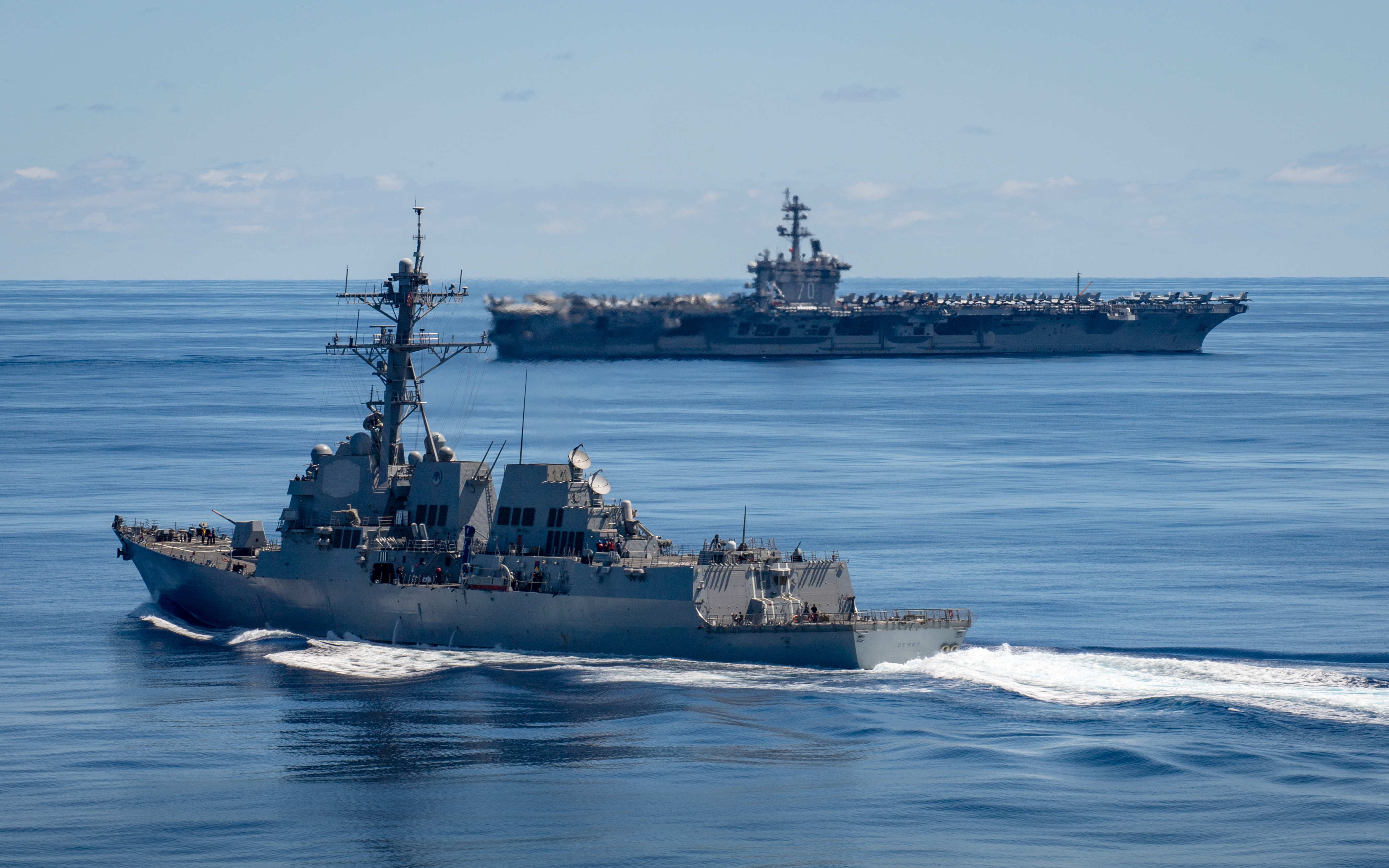
This post is part of a series looking back at the top naval stories from 2021.
Naval operations this year once again saw the United States Navy balancing presence in multiple theaters, as the U.S. withdrew from the war in Afghanistan and continued emphasizing the Indo-Pacific region.
In addition to a U.S. presence in the Indo-Pacific, 2021 saw several U.S. allies send ships to operate in the region, giving American ships and crew the opportunity to drill with both European and regional allies.
While the U.S. Navy kept a steady warship presence in the Middle East, this year was the first in several in which the Navy did not have an aircraft carrier consistently operating in U.S. Central Command.
This year also saw the Navy’s first deployment of its new CMV-22B Osprey carrier onboard delivery aircraft and the F-35C Lightning II Joint Strike Fighters.
Meanwhile, the introduction of the COVID-19 vaccine helped the service ease some of its pre-deployment restrictions on sailors and resume some normal aspects of deployments like port calls.
The Navy also continued to grapple with the fire that led it to scrap the former USS Bonhomme Richard (LHD-6) and its pressing maintenance backlogs at the public shipyards.
Indo-Pacific
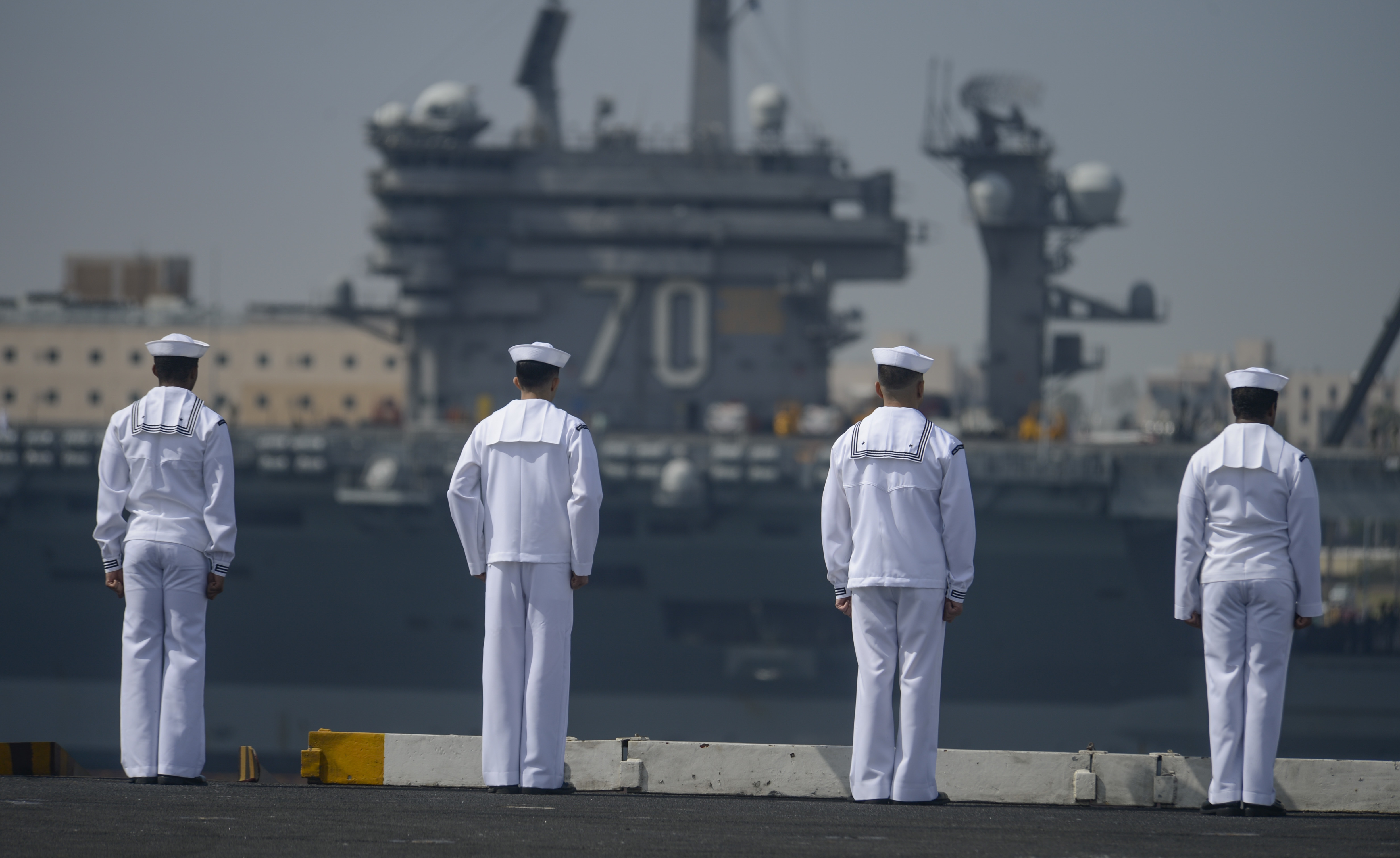
The Navy kept a largely consistent carrier presence in the Indo-Pacific this year, as the new Biden administration sought to continue the prior administration’s emphasis on the region and China.
In its second deployment within a year, USS Theodore Roosevelt (CVN-71) spent the first several months of 2021 operating throughout U.S. Indo-Pacific Command. The aircraft carrier deployed at the end of last year with two of the escorts from its first deployment earlier in 2020.
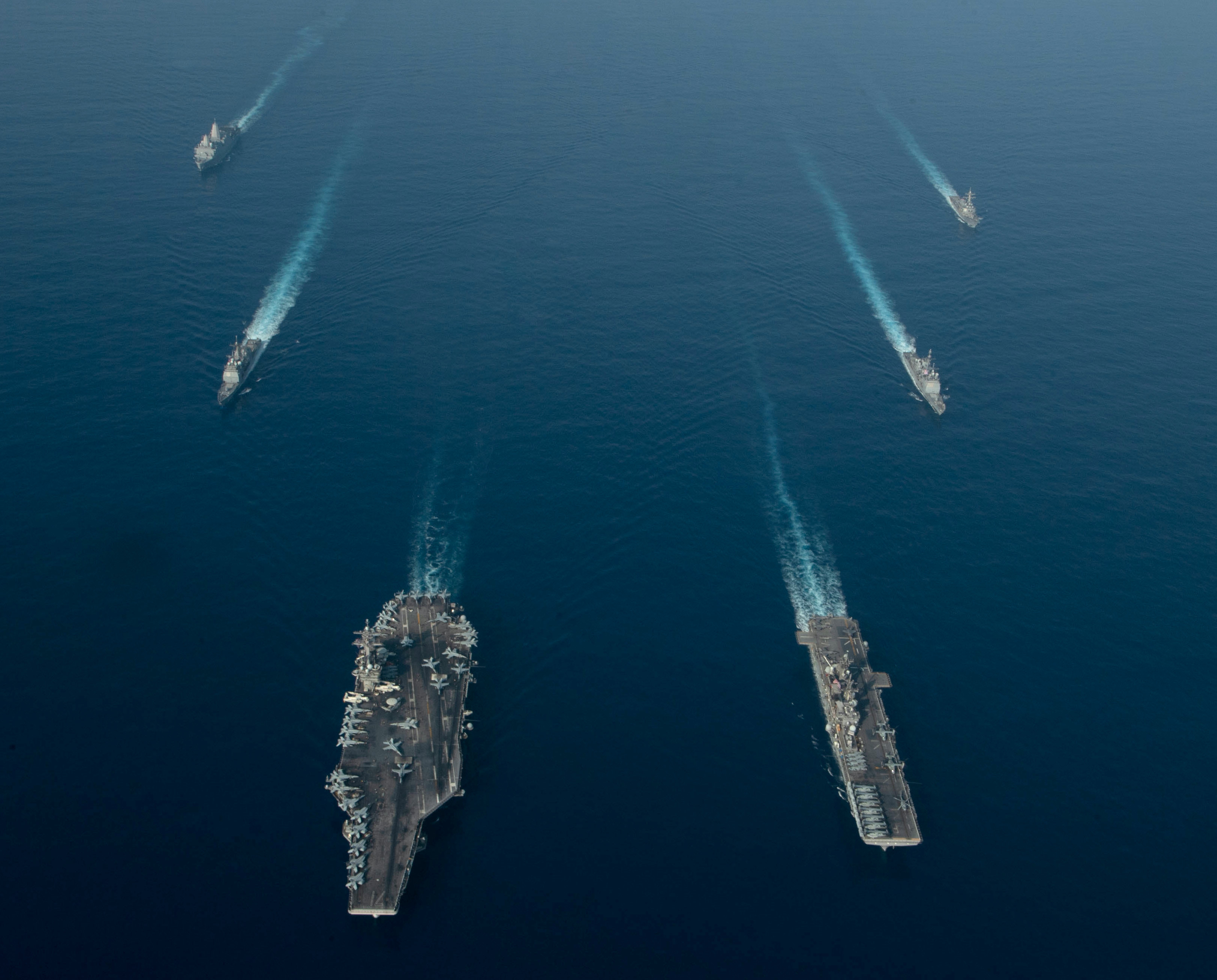
In April, the TR Carrier Strike Group and the Makin Island Amphibious Ready Group drilled in the South China Sea amid heightened tensions between China and the Philippines. At the time, Chinese maritime militia vessels gathered near the Whitsun Reef off the coast of the Philippines, an incident the Pentagon voiced concern over at the time. Several months later, in June, the Philippines for the second time paused its plans to terminate part of the Mutual Defense Treaty with the United States.
Meanwhile, U.S. Navy ships performed transits through the Taiwan Strait at nearly monthly intervals for much of 2021, including multiple transits that received protests from Beijing. The repeated transits came amid increased concern in the U.S. over tensions between Taiwan and China, and as China on multiple occasions flew jets into Taiwan’s air defense identification zone (ADIZ).
The service also performed several freedom of navigation operations in the South China Sea this year.
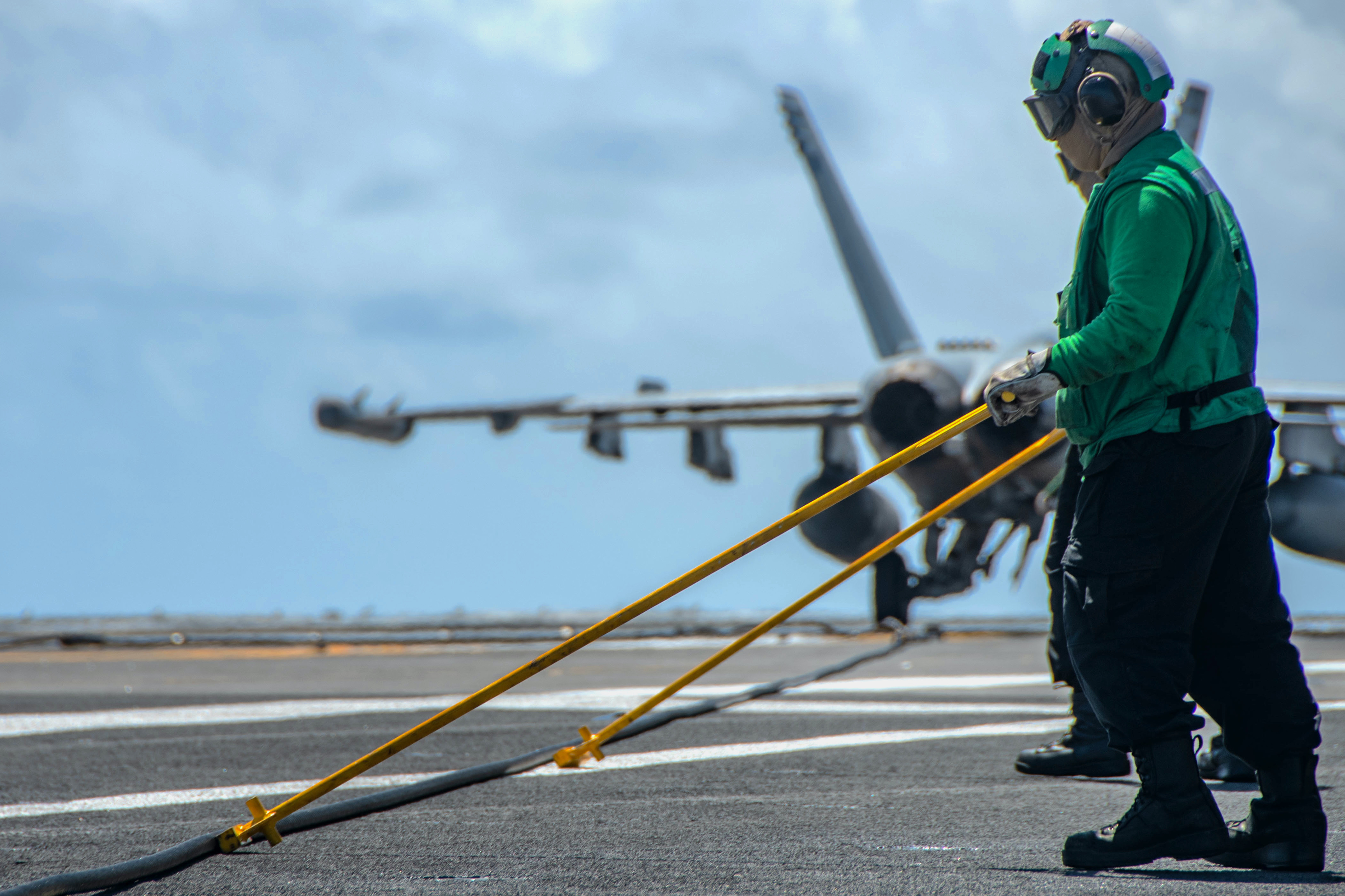
USS Ronald Reagan (CVN-76), the Navy’s Japan-based forward-deployed carrier, operated in the Indo-Pacific for part of its 2021 spring patrol before getting diverted to the Middle East.
Since August, the Carl Vinson Carrier Strike Group has been operating throughout Indo-Pacific Command, drilling with multiple countries’ navies, including the Japan Maritime Self-Defense Force, the United Kingdom’s Carrier Strike Group 21, the Germany Navy and the Royal Australian Navy.
The Vinson CSG deployment features the Navy’s most sophisticated air wing yet, with the first deployment of a combined air wing with the fifth-generation F-35C and the new CMV-22B Osprey.
Middle East
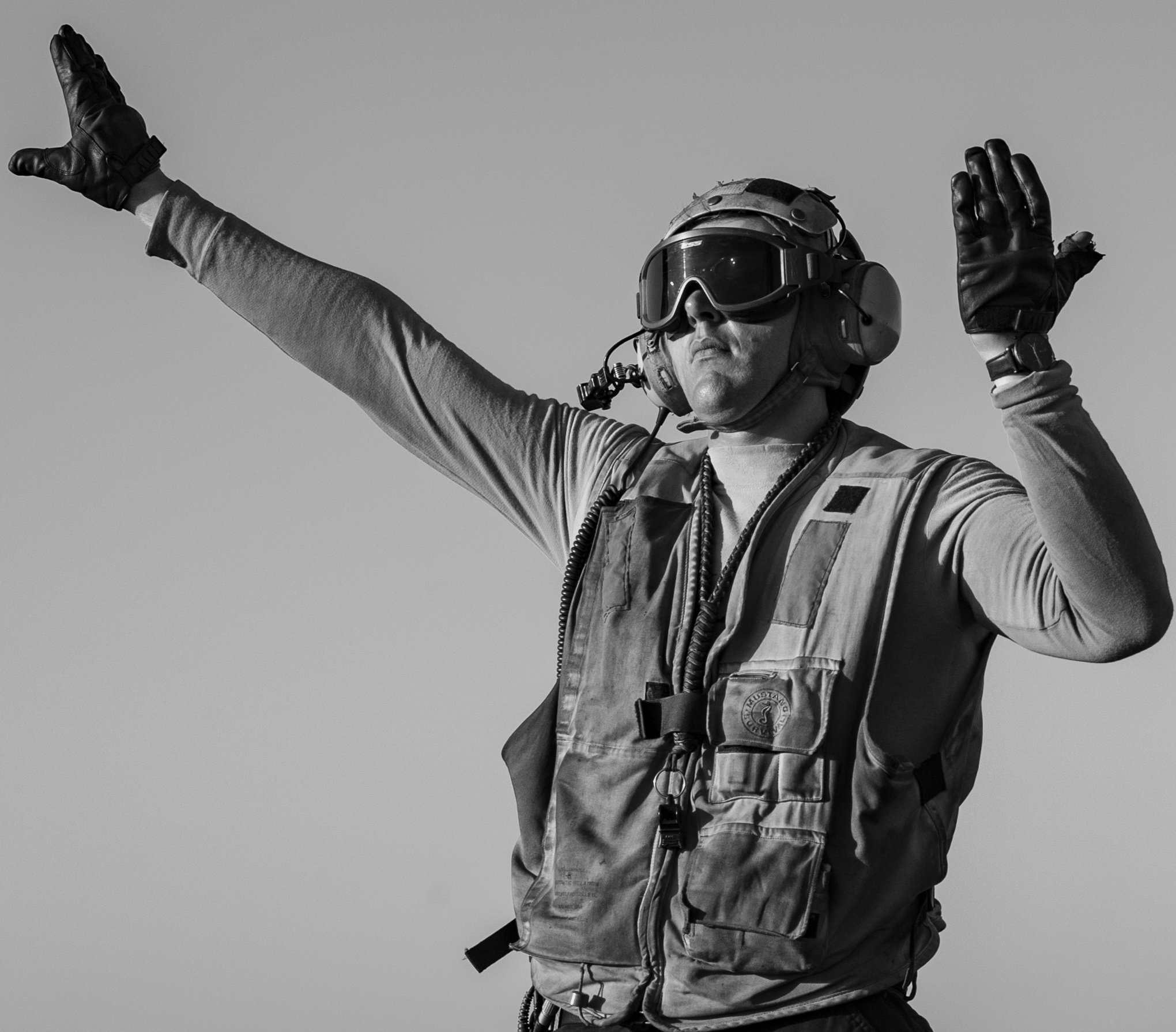
This year began with the Nimitz Carrier Strike Group operating in the North Arabian Sea for the end of its deployment. It was the second year in a row that started off with heightened tensions between the U.S. and Iran. After originally calling for the carrier to come home, the Pentagon – citing threats from Iran on the anniversary of the killing of Iran’s Islamic Revolutionary Guard Corps Quds Force Commander Qasem Suleimani – kept USS Nimitz (CVN-68) operating in the region through the rest of January.
Shortly after Nimitz’s departure from the region at the end of January, the Makin Island Amphibious Ready Group moved into the Persian Gulf and operated in Central Command until another aircraft carrier arrived on station in early April.
After operating in the Mediterranean, the Dwight D. Eisenhower Carrier Strike Group eventually took its place in U.S. Central Command. It was the second deployment within a year for Eisenhower and one of its escorts – USS Vella Gulf (CG-72) – and one of two so-called double-pump deployments for the Navy this year, showing the continued strain on the carrier force.
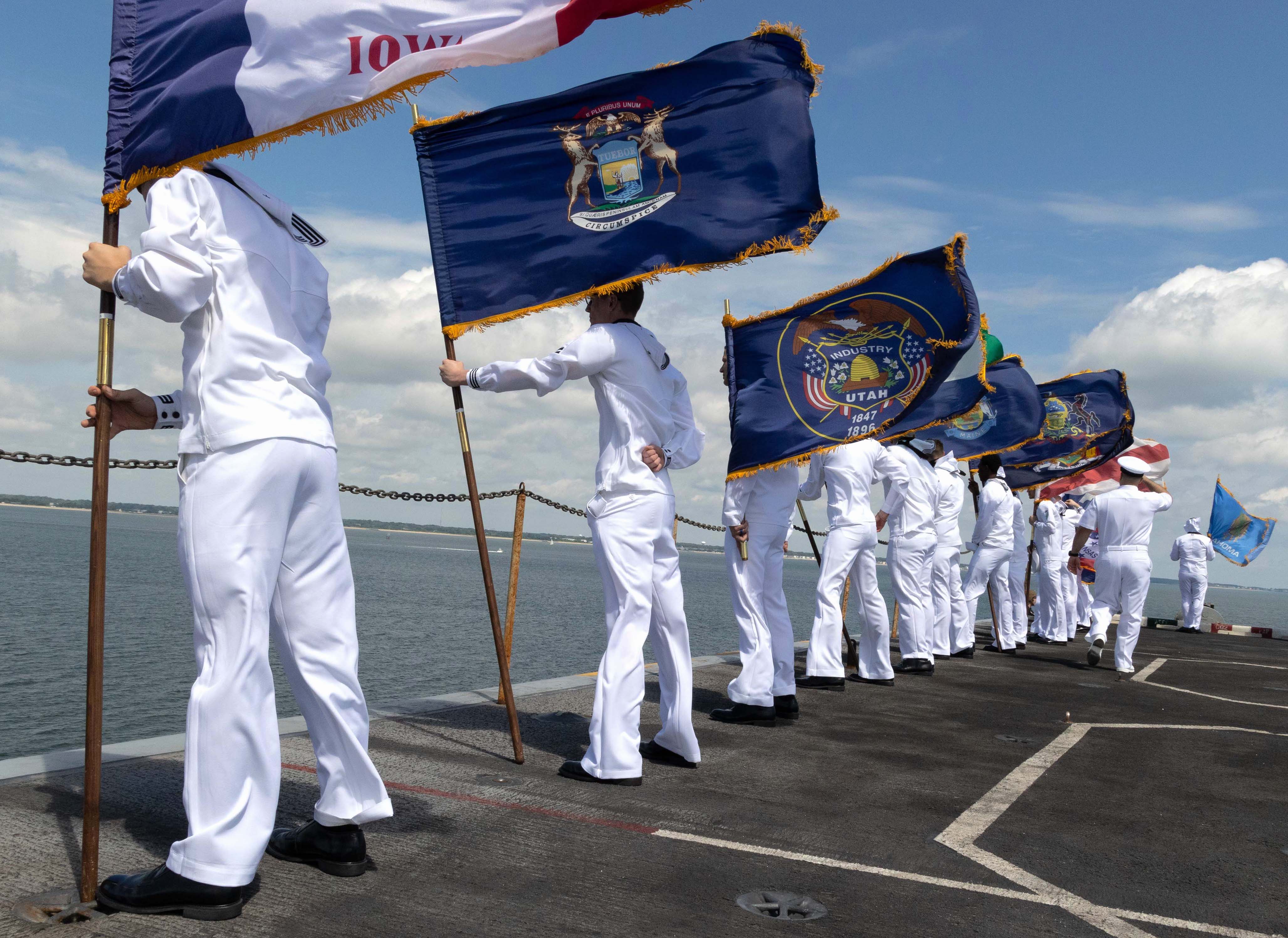
Eisenhower left for its deployment in February, allowing the Navy to offer its sailors the COVID-19 vaccine before they left Norfolk, Va. Around the same time, the service announced new guidance for sailors preparing for deployment to account for the availability of the vaccine. At the time, the Navy had been enforcing bubble methods and restriction-of-movement (ROM) sequesters to prevent sailors gearing up to deploy from catching COVID-19. But the February guidance allowed sailors who were fully vaccinated to remain at their own homes, instead of a hotel room or other housing, for the two weeks leading up to deployment.
IKE remained on station in the Middle East through the end of June, when the Ronald Reagan Carrier Strike Group entered Central Command to relieve IKE and support the U.S. withdrawal from Afghanistan. It was the first time the Navy’s Japan-based carrier operated in the Middle East since the former USS Kitty Hawk (CV-63) supported the 2003 invasion of Iraq.
Over the summer, the Iwo Jima Amphibious Ready Group also operated in Central Command to support the U.S. withdrawal from Afghanistan.
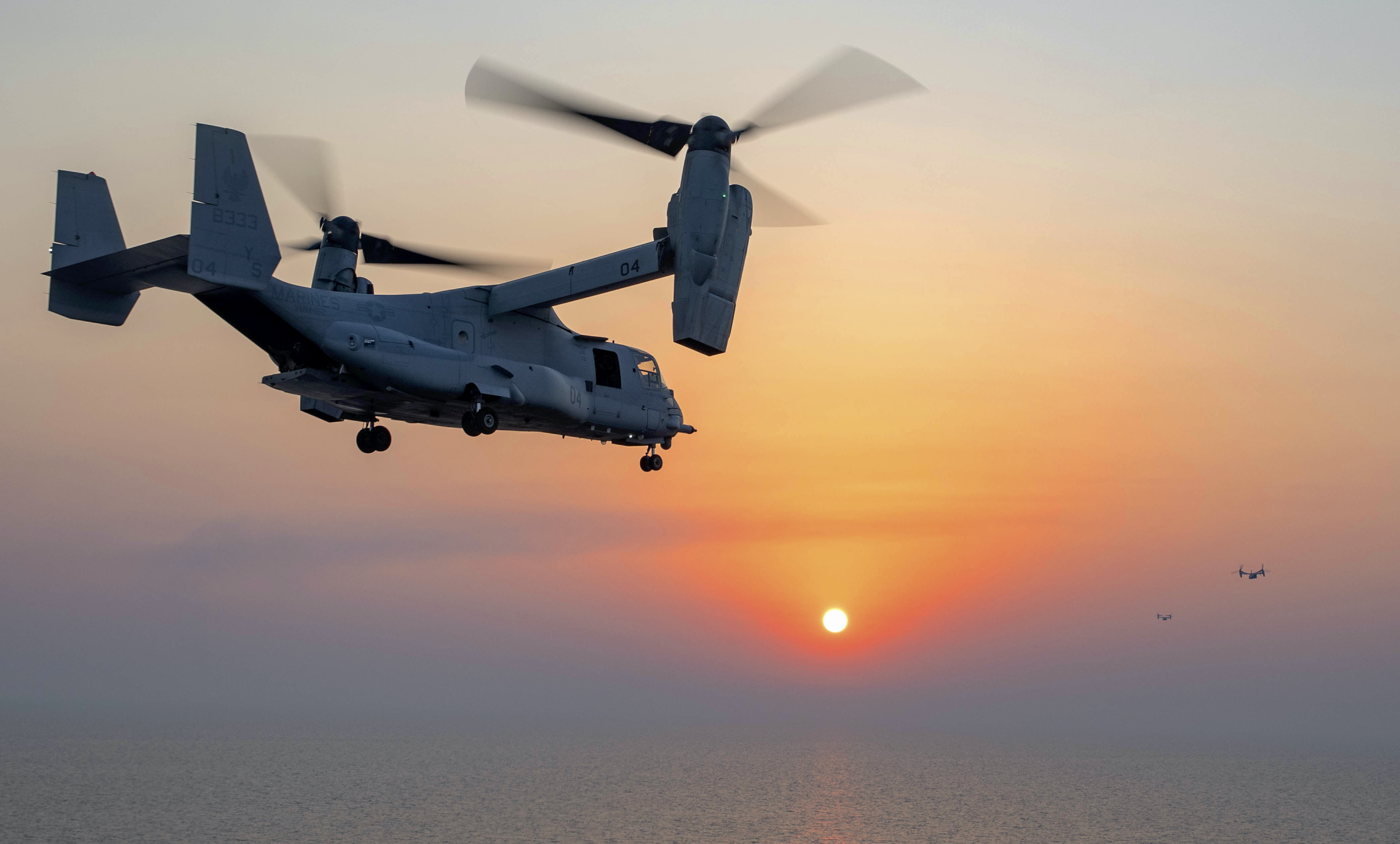
After the withdrawal concluded at the end of August, Reagan left Central Command in mid-September, having operating in the Middle East for almost three months. Iwo Jima also left the region in September.
Since mid-September, the Essex Amphibious Ready Group has been operating in the Middle East.
Atlantic
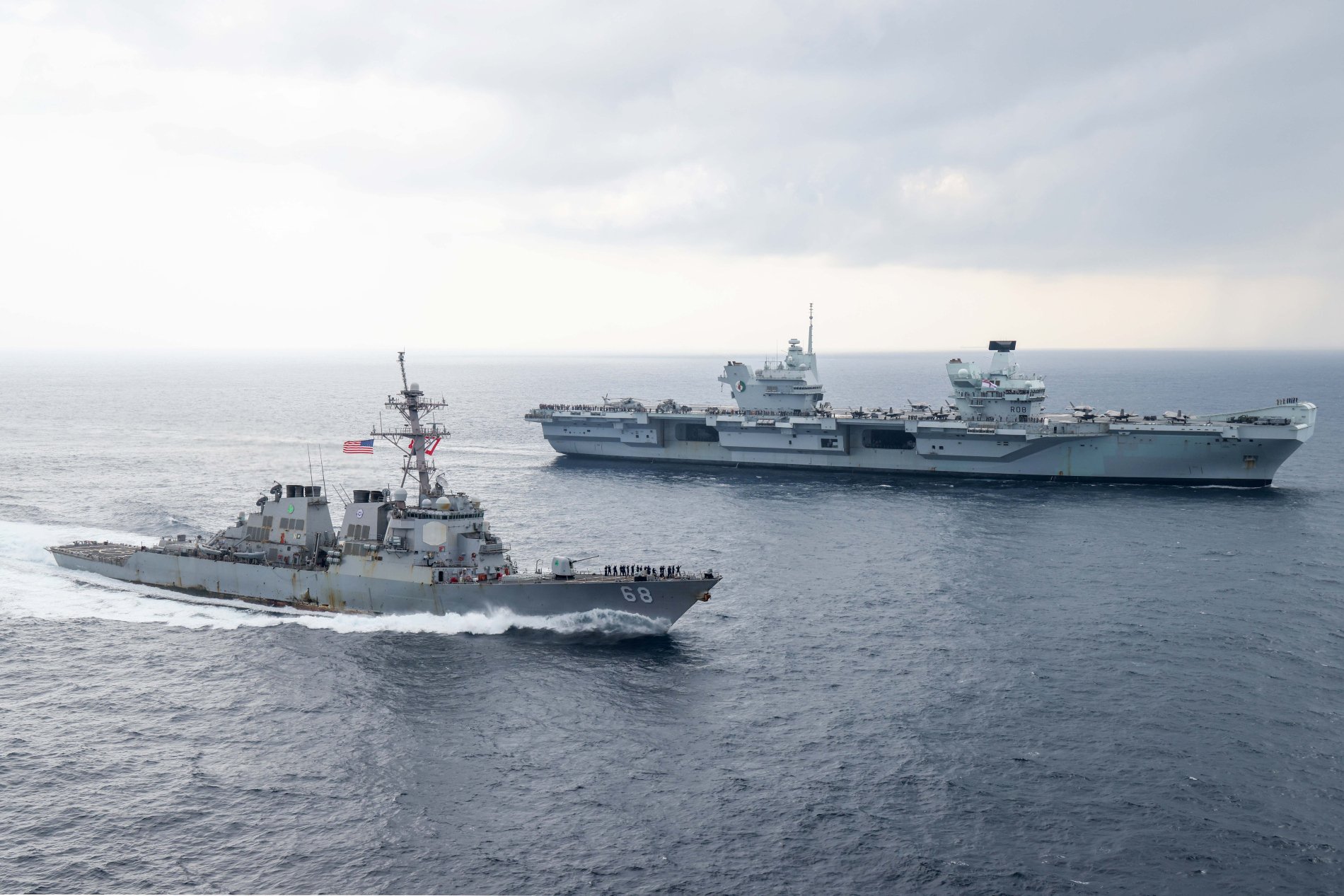
This year saw the U.K.’s maiden deployment for its new aircraft carrier, HMS Queen Elizabeth (R08), which deployed with a multinational carrier strike group that included American destroyer USS The Sullivans (DDG-68) and Dutch frigate HNLMS Evertsen (F805).
In May, the U.K.’s CSG 21 operated in the North Atlantic with the Iwo Jima ARG for an exercise that combined the U.K.’s Strike Warrior drills with the United States’ Ragnar Viking drills that included multiple NATO allies.
That same month, NATO allies participated in the first phase of Steadfast Defender 2021, which featured 11 NATO countries drilling in the Atlantic.
The Navy this year also performed its Large Scale Exercise 2021, a massive drill that spanned both the Atlantic and Pacific theaters to test out the service’s operating concepts across staffs and time zones around the globe. During the two-week exercise, USS Kearsarge (LHD-3) performed a fueling-at-sea test in the Atlantic with USS Gonzalez (DDG-66).
Maintenance
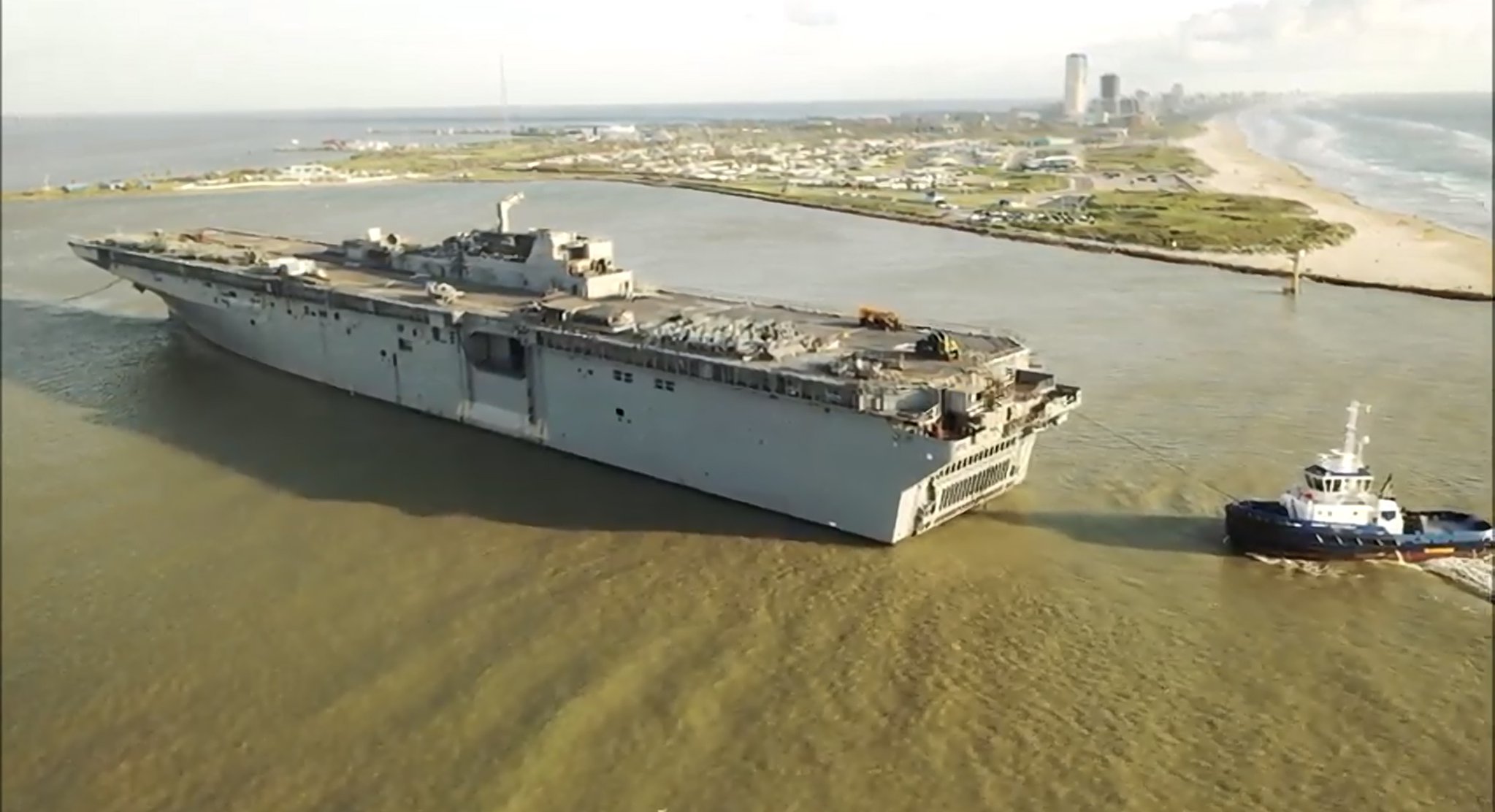
The Navy continued to deal with the fallout from the July 2020 fire aboard the former USS Bonhomme Richard (LHD-6), which was decommissioned earlier this year and sold for scraps to Texas-based International Shipbreaking LTD.
When the amphibious warship caught fire last July, it was was nearing the end of a maintenance period at Naval Base San Diego, where it was receiving upgrades to accommodate the F-35B Lightning II Joint Strike Fighter.
The Navy in July charged Seaman Apprentice Ryan Mays, who was working aboard Bonhomme Richard at the time, with aggravated arson and hazarding a vessel. The sailor’s Article 32 hearing took place last week and U.S. 3rd Fleet commander Adm. Stephen Koehler will decide how to handle the charges.
A guided-missile cruiser in port for maintenance experienced its own fire in July. USS Gettysburg (CG-64) was at the BAE systems repair yard in Norfolk, Va., when a small fire broke out onboard. USNI News reported last year that ships undergoing maintenance phases are at a higher risk for fire damage due to ongoing hot work and welding.
In response to fires the service has experienced over the years, earlier this month Naval Sea Systems Command announced it had created the Industrial Fire Safety Assurance Group (IFSAG) to thwart future fires and harness better practices can be used both during maintenance phases and when building ships.
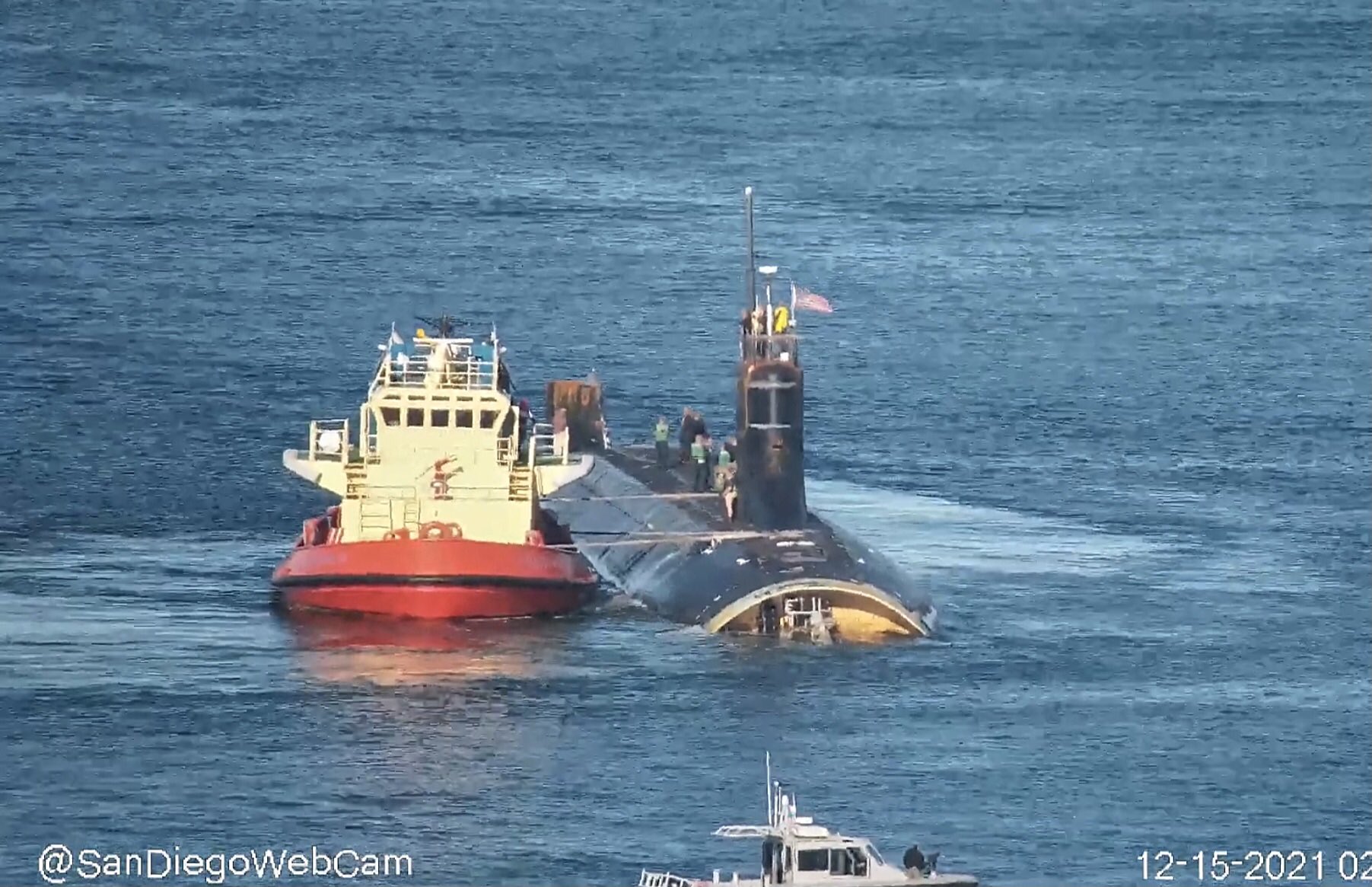
Meanwhile, the Navy hit another hurdle that is likely to affect its maintenance woes when Seawolf-class attack submarine USS Connecticut (SSN-722) struck an unmapped seamount in the South China Sea in October. The collision damaged the ballast tanks and the forward section of the boat, USNI News previously reported.
The submarine earlier this week reached its homeport in Bremerton, Wash., where it will be repaired. But the public shipyards already face a submarine maintenance backlog and the Navy’s acting assistant secretary for research, development and acquisition told Congress in October that fixing Connecticut at one of the public yards would affect the logjam of work.
“If we ended up doing [the Connecticut work] in one of the public shipyards that would certainly cause perturbations in all the other work in the shipyards,” Jay Stefany told the House Armed Services readiness subcommittee at the time.
The Navy’s ongoing maintenance backlog has caught the attention of lawmakers, who have expressed concern about the service’s 20-year timeline for the plan to modernize the public shipyards. In response to this concern, NAVSEA chief Vice Adm. Bill Galinis said earlier this year that his team was assessing the potential to speed up the Shipyard Infrastructure Optimization Plan (SIOP) to a 10 and 15-year timeline.





